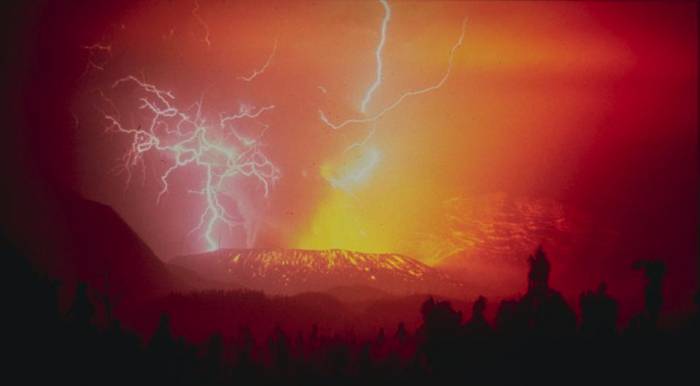The thunderclaps were created by lightning in the towering plumes of ash that rose from the Bogoslof volcano in the Aleutian islands. The booms were picked up by microphones on another island some 40 miles away.
The sound of volcanic thunder has never been captured before, chiefly because it is so hard to disentangle from the bangs and rumbles that already accompany volcanic eruptions. In the audio recording, the thunder sounds like pops and clicks over the lower-pitched rumble of the eruption.
“It’s something that people who’ve been at eruptions have certainly seen and heard before, but this is the first time we’ve definitively caught it and identified it in scientific data,” said Matt Haney, a seismologist at the Alaska Volcano Observatory in Anchorage.
The Bogoslof volcano erupted more than 60 times between December 2016 and August 2017, handing researchers the ideal opportunity to record the blasts from the neighbouring island of Umnak. In March and June, microphones picked up the distinctive sounds of volcanic thunder, which arrived at Umnak three minutes after a global network of lightning sensors detected flashes in the Bogoslof ash plume.
“If people had been observing the eruption in person, they would have heard this thunder,” said Haney, whose work is published in Geophysical Research Letters. The thunder follows lightning that is created in the plume when tiny ash and ice particles collide with each other and become electrically charged in the process.
The Bogoslof volcano lies directly under major flight paths from Asia to North America and the eruptions last year prompted an aviation warning, as plumes of ash rose high into the sky. With further research on volcanic thunder, scientists believe they can find more accurate ways to predict the size of volcanic plumes and thus how disruptive they may be to air travel.
The Guardian
More about: science
















































